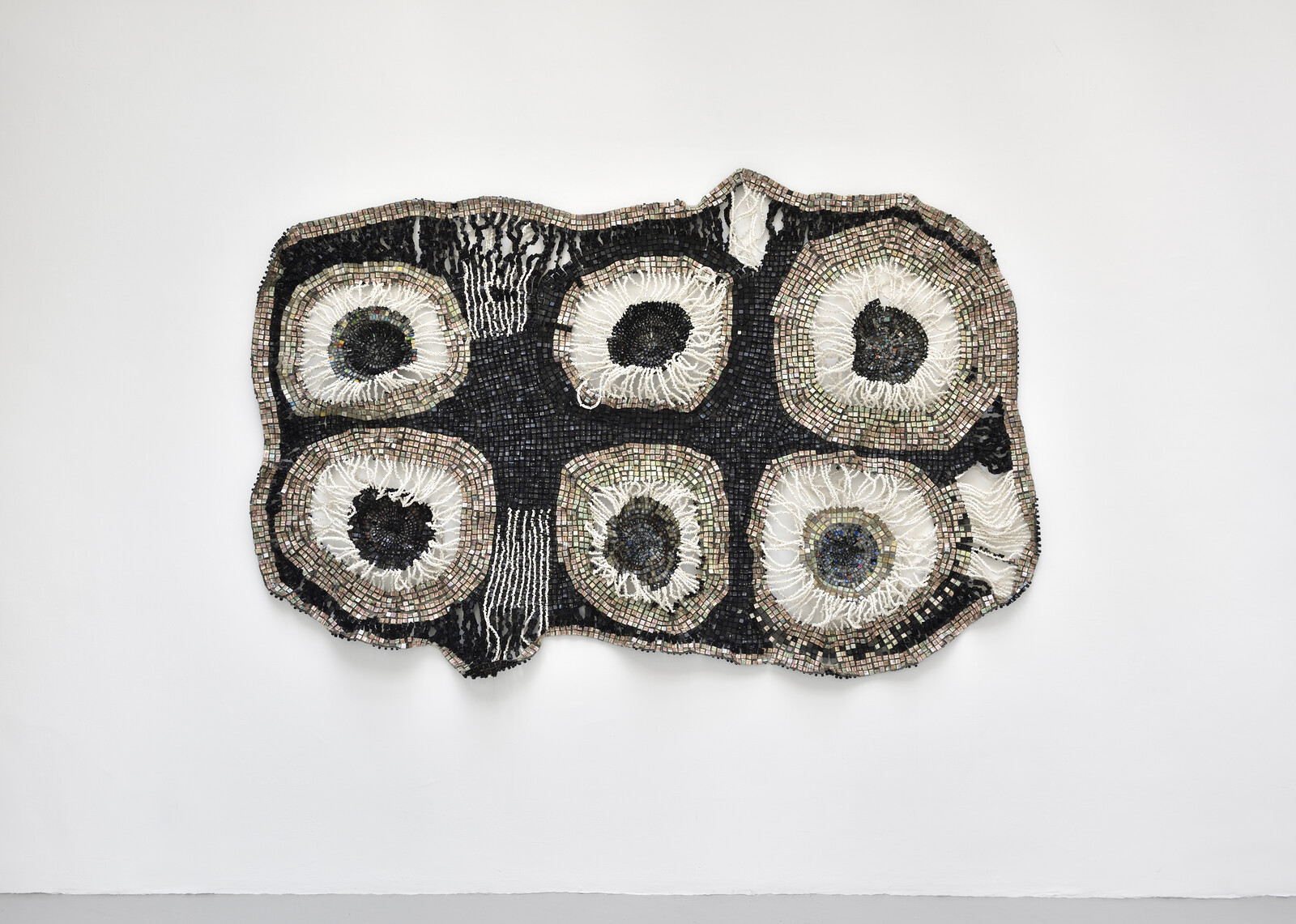Zero Zero
May 6–June 17, 2023
44 rue Quicampoix
75004 Paris
France
Hours: Tuesday–Saturday 11am–7pm
T +33 9 79 26 16 38
info@semiose.com
Moffat Takadiwa is known for his organically structured works, made up of objects salvaged from one of Zimbabwe’s largest landfills, situated on the outskirts of Harare. Appropriating everyday consumer products and breathing new life into them, the artist denounces the prevailing dynamics of economic and political power. Situated between denunciation and sublimation, his works echo the remnants of colonial domination, the debris of an ultra-globalized world and the ecological challenges of overconsumption.
Through his use of the computer keyboard keys that invade his compositions, Moffat Takadiwa accords language a fundamental role in his work. Resonating with constant movement, his oeuvres pit two cultures against one another: one based on an oral tradition, while the other stems from an ultra-digital landscape, perpetually inundated by a never-ending flow of words. Acting as metaphors of digital culture, these dismantled keys embody the new common language of the internet, one that is devoid of any geographical or cultural identity and whose vocabulary is subject to constant evolution and codification. The disassembled QWERTY keyboards form a malleable alphabet that allows the artist to take aim at the English language, a ubiquitous symbol of globalization as well as a remnant of Zimbabwe’s colonial history. Through the repeated re-arrangement of these keys, liberated from their original context, Takadiwa dismantles the language and creates one of his own, free of all political, economic and cultural constraints, in a similar way to those generations born in the post-digital era.
The artist integrates consumer products into tapestries with Zimbabwean motifs, drawing inspiration from traditional African weaving and wickerwork from the Hurungwe region. On close inspection, his works reveal empty Colgate toothpaste tubes, worn-out toothbrush bristles and caps from used Coca-Cola bottles. Viewed from a greater distance, they resemble clusters of precious stones or rich mosaics overflowing with color. Objects of desire are created from used, abandoned and sometimes repulsive items as a mysterious transformation takes place. In a provocative and triumphant act, Moffat Takadiwa seizes upon the consequences of economic and political domination and by anchoring them in a sumptuous, local aesthetic, he succeeds in overturning the prevailing dynamics of power.
As a reflection of the Anthropocene age, his post-industrial fabrics evoke urban or rural landscapes, seen from above and revealing mankind’s geological imprint. These damaged landscapes, colonized by objects and transformed into oceans of debris, are strongly reminiscent of the vortex of waste situated in the Pacific, a sixth continent made up entirely of plastic. His works appear to be in a state of overflowing, and thus bear a certain resemblance to the “all-overs” of 1950s abstract impressionism, as well as being intimately linked to the notion of the infinite. Takadiwa’s oeuvre reveals the vast immensity of the devastation produced by man, in which the individual finds her or himself swept away or even drowned.
Takadiwa’s oeuvres constitute a poetic chronicle of contemporary society. At a time when ecology is increasingly under threat and new technologies are transforming the world as we know it, Moffat Takadiwa grasps the situation, embodies it and denounces it, while avoiding any descent into nihilism. Uncompromisingly critical of the world, yet imbued with an almost totemic aura, his works convey a preciosity and presence that demand meditation. By conferring dignity on waste, by intermingling revolt and contemplation, they offer a ray of hope and poetry in the midst of a fragile and threatened society. His works operate as a silent manifesto for a coming revolution.
Jérôme Sans
Jérôme Sans is a curator, artistic director and director of institutions. He co-directed the Palais de Tokyo with Nicolas Bourriaud for the first six years of the art centre, before heading the Ullens Center for Contemporary Art (UCCA) in Beijing from 2008 to 2012. He has curated numerous major international exhibitions, including the Taipei Biennale (2000), the Lyon Biennale (2005), etc. He was editor-in-chief of L’Officiel Art and is a regular contributor to Purple.








